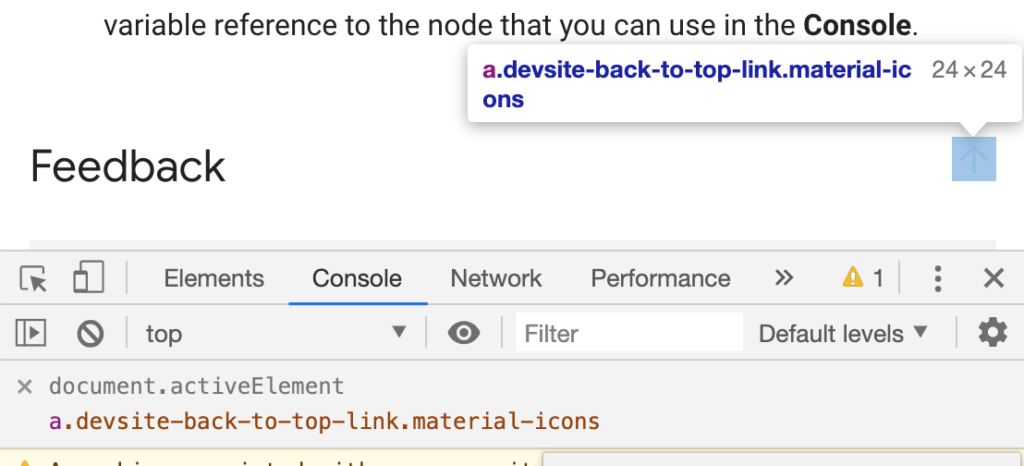Your fortnightly frequent11y newsletter, brought to you by @ChrisBAshton:
Why to Avoid Accessibility Overlay Toolbars, Pugins & Widgets
- Accessibility Works article warning against the installation of third-party overlays/widgets that promise to make your site accessible. These tools provide options for customising text size, providing magnifiers, and in some cases a built-in screen reader or alt-text generator. However, they cannot address the 70% of accessibility issues that can only be manually addressed – and they require the user to have to find and learn how to use a whole new accessibility tool.

- Kayce Basques, technical writer at Google, shares a Chrome tip for developers/testers. By creating a “Live Expression” with the value
document.activeElement, you can tab around the web page and always know where the focus state is, even if there aren’t any associated focus styles.
Treating cataracts in the 21st century
- Brief but interesting article highlighting that one billion people in the world have preventable or treatable visual impairments; 300 million of these are cataracts, which accounts for 50% of blindness worldwide. A cataract is an opacity in the lens of the eye, often caused by ageing, and can be fixed with surgery: a small incision, fragmenting the lense, emitting ultrasound to aspirate the cataract.
Facing coronavirus while deaf and blind: ‘Everything relies on touch’
- Article by ABC News, highlighting the plight of the 40,000 deaf-blind Americans who rely on touch but have to maintain social distancing. They use hand-over-hand signing to communicate, and finger-scan braille public signs for mobility, now prone to contagion. The community uses computers and internet to try to counter isolation and loneliness. There are fears that states have considered putting people with disabilities at the back of the line for treatment.
Semantic sidenotes for the web
- Article (or video) by UI designer Koos Looijesteijn, describing ‘sidenotes’ that have been in print media for centuries, and the difficulty in representing them in HTML. His solution is a
<span>containing a<label>that can be clicked to expand a corresponding<small>on mobile, or that highlights the text at the side on desktop. At publish time it required JS but now appears to have been refactored to be CSS-only, using clever checkbox logic. By the author’s admission, it’s ugly, and we should campaign for a native solution instead.
- Adrian Roselli writes about this attribute that describes the role of an element. It overrides what is announced to the screen reader, e.g.
<input type="text" aria-roledescription="Only numbers allowed">will read as “Only numbers allowed” instead of “input type text”. This hides meaning and the control type – a confusing experience for the user. It also doesn’t translate. There’s an open issue about the global nature of this attribute. Don’t use it!
When (not) to use the <br> element
- Šime Vidas shares a helpful reminder that the
<br>line break element is useful in some cases. Whilst web developers have generally moved away from<br>use – seeing line breaks as presentation, not content, and therefore using CSS instead – it should still be used when line breaks are part of the content. For example: poems or addresses.
The Complete Guide to Accessibility for WordPress Websites
- Post on deque.com highlighting that WordPress powers 35% of websites and its accessibility greatly depends on the themes and plugins you have installed. There are a number of themes explicitly tagged as “Accessibility Ready”, although you should manually test too as quality varies. The new WordPress editor ‘Gutenberg’ was released in mid 2019 despite its accessibility issues, but the maintainers hope these are all resolved in 2020.
Did you know that you can subscribe to dai11y, week11y, fortnight11y or month11y updates! Every newsletter gets the same content; it is your choice to have short, regular emails or longer, less frequent ones. Curated with ♥ by developer @ChrisBAshton.